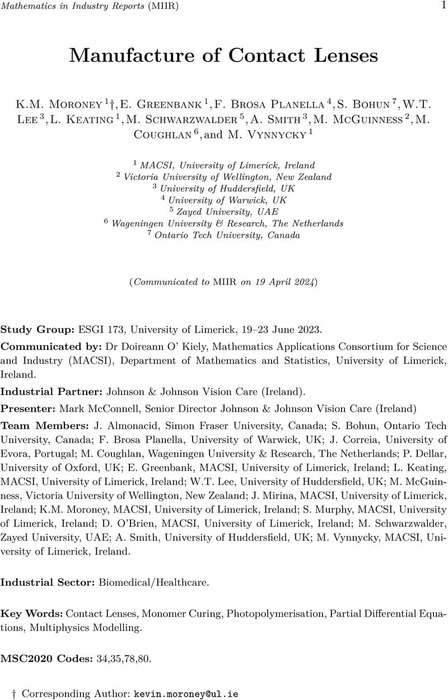Abstract
Johnson & Johnson (J & J) Vision Care manufacture billions of soft contact lenses each year at their site in Limerick. One aspect of contact lens production which is time and energy intensive is the curing process, where a liquid monomer solution is converted into a soft solid in a photopolymerisation reaction. This study develops models of the photopolymerisation process during contact lens manufacture, incorporating the important physicochemical mechanisms, to facilitate process understanding and optimisation. The developed models account for light propagation, heat transport and polymerisation kinetics. The relationship between curing time and lens thickness, monomer solution properties and oxygen inhibition is probed in a series of simulations, showing the potential of the models to explore optimal processing conditions for specific lens configurations. A separate model is developed to assess the relationship between the degree of cure of the lens and its distortion under gravity.
Content



![Author ORCID: We display the ORCID iD icon alongside authors names on our website to acknowledge that the ORCiD has been authenticated when entered by the user. To view the users ORCiD record click the icon. [opens in a new tab]](https://www.cambridge.org/engage/assets/public/miir/logo/orcid.png)

